Two main guiding principles of REST are cacheable and stateless. REST principles include a uniform interface, client-server, cacheable, stateless, layered system, and optional code on demand. By ensuring responses are cacheable, REST can improve network efficiency. Being stateless means each request from a client contains all the information the server needs, enhancing scalability and simplicity.
Drag and drop the code to complete an Ansible playbook that creates a new tenant. Not all options are used.
Select and Place:
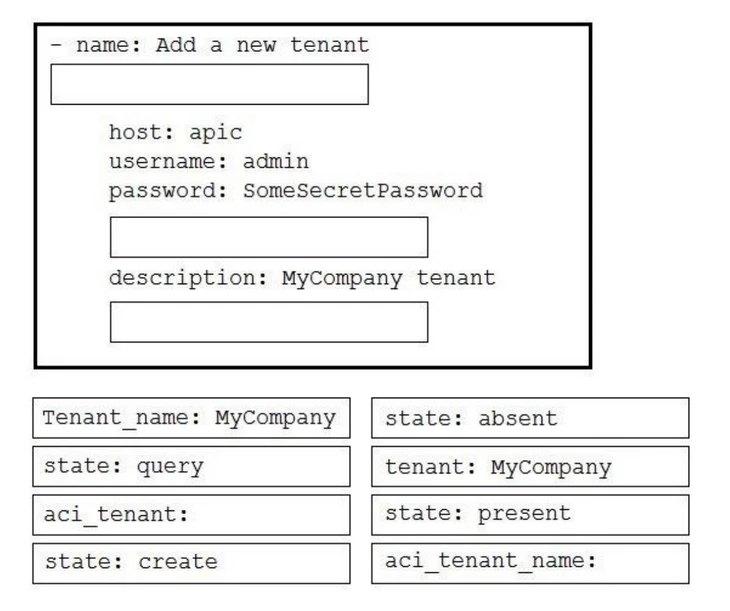
https://docs.ansible.com/ansible/2.4/aci_tenant_module.html
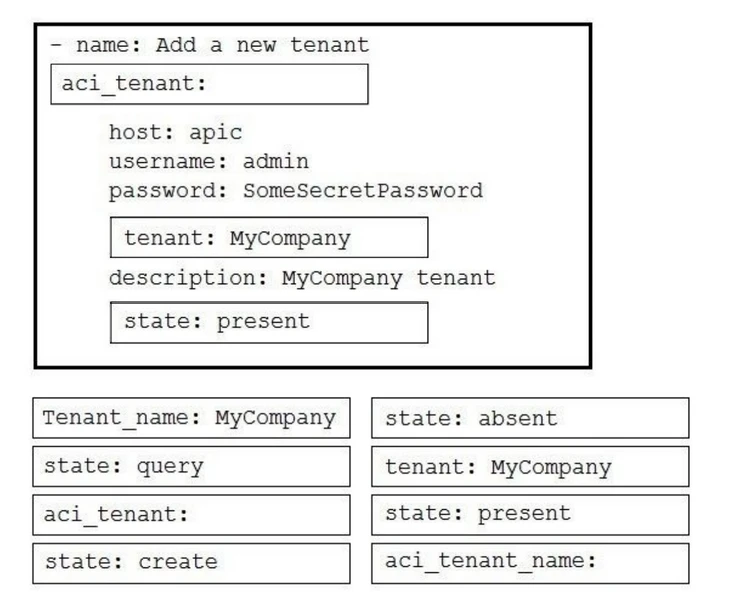

Which action does the execution of this ACI Cobra Python code perform?
The ACI Cobra Python code provided in the exhibit queries the Cisco ACI's managed objects for 'fvCEp', which stands for Fabric Virtual Client Endpoint. The code logs into the ACI, retrieves the full subtree of information for 'fvCEp', and iterates through the list of endpoints, printing their MAC and IP addresses. Therefore, this code is designed to print all endpoint MAC and IP addresses.
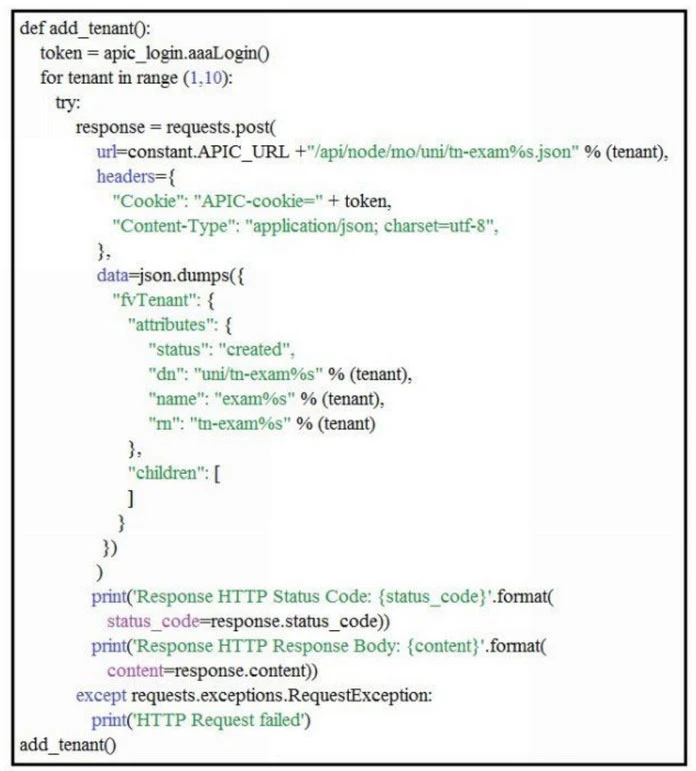
Assuming a new ACI instance, what is the result when this script is run?
The script uses the range(1, 10) function in Python, which generates a sequence of numbers starting from 1 up to but not including 10. Therefore, the loop runs from 1 to 9, resulting in the creation of nine objects. Each iteration of the loop calls the requests.post() function to create a new tenant object. No objects are deleted in this script.
A.
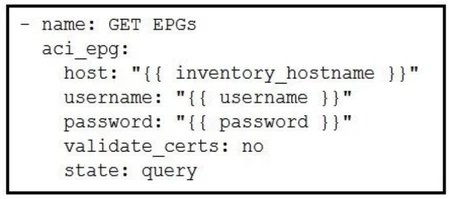
B.
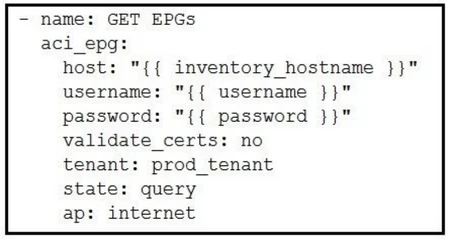
C.
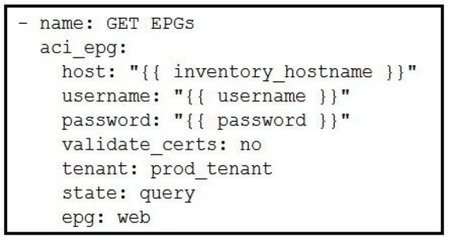
D.
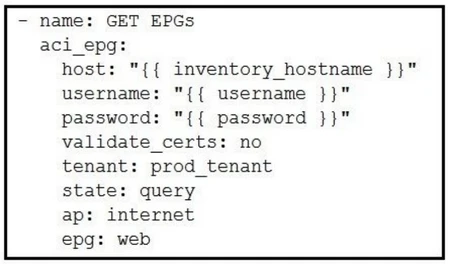
Option D returns the fewest queried ACI endpoint groups. It includes the most specific criteria by specifying the tenant (prod_tenant), the application profile (ap: internet), and a particular endpoint group (epg: web). This makes it the most restrictive query compared to the others, which are less specific and thus return more endpoint groups.